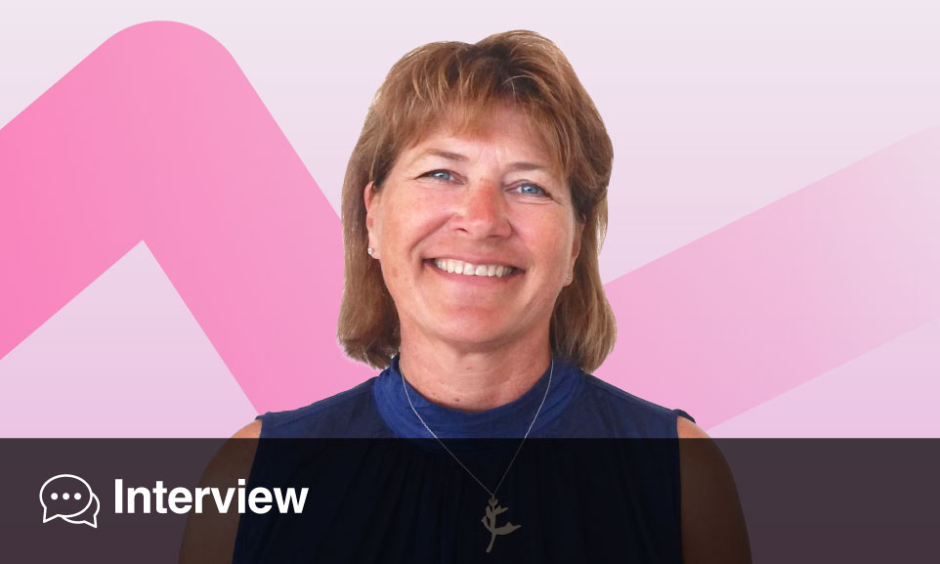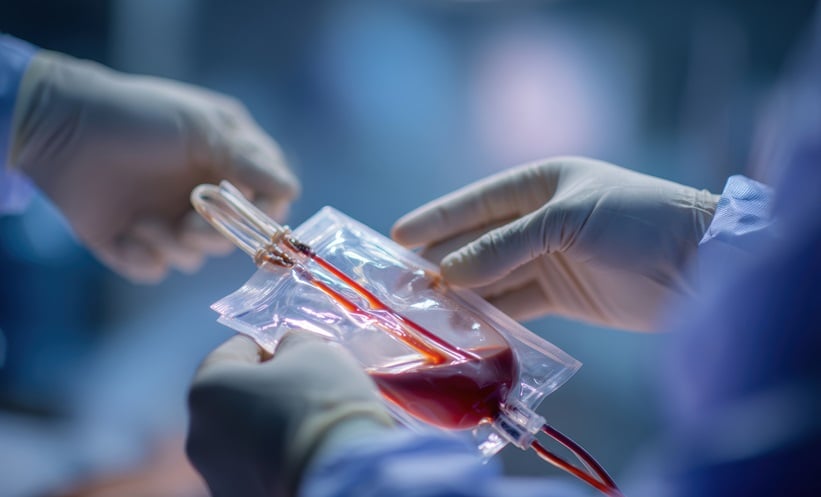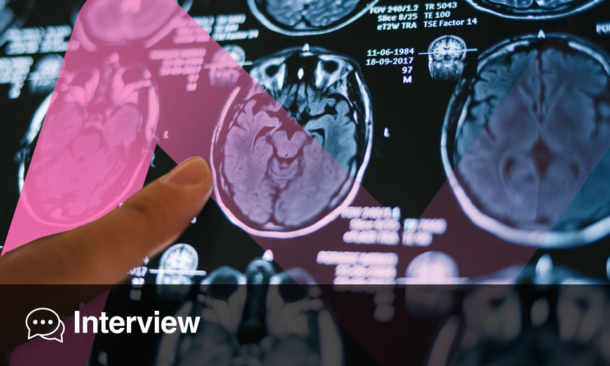Astri Arnesen | President and CEO, European Federation of Neurological Associations (EFNA); President, European Huntington Association (EHA)
Citation: EMJ Neurol. 2025;13[1]:61-64. https://doi.org/10.33590/emjneurol/FINT4622
![]()
EMJ spoke with Astri Arnesen, president of the European Huntington Association (EHA) and a leading voice in rare disease advocacy, to discuss the evolving landscape of patient engagement, the challenges facing Huntington’s families, and the importance of international collaboration in advancing care and research.
How did your family’s experience with Huntington’s disease inspire your commitment to patient advocacy, and in what specific ways has this personal journey influenced your leadership and vision within both European Federation of Neurological Associations (EFNA) and European Huntington Association (EHA)?
It all began when my mother was diagnosed with Huntington’s disease. At the time, Huntington’s was a rare disease, and it still is by definition, and we felt really alone and isolated. Fortunately, just a few years earlier, the had been established, and our doctor informed us about it. This was before the days of the internet, so we were put in touch directly with the association’s president, who kindly met with us. Through her, we also connected with other families affected by the disease. That experience was a lifeline for us. Meeting others who were going through the same challenges made us realise we were not alone. We could exchange our concerns, questions, and feelings we had around this situation. For me, it was a helpful and supportive moment. From that point on, I became actively involved. Over time, I took on more responsibilities and eventually became the president of the Norwegian Association for Huntington Disease. My involvement then extended to the European space within the same organisation. It was really a personal experience of how helpful it was to have peer-to-peer engagement in the community. This personal journey has shaped my approach to advocacy.
Having been a patient advocate since the mid-1980s, you have witnessed significant progress in the field. What are the most persistent barriers patient advocacy groups still face today in supporting individuals and families affected by neurological disorders?
There have definitely been positive changes over the years. The rise of the internet gives us more opportunities to reach people and share information. However, navigating that vast amount of information can still be overwhelming. Many individuals still struggle to find the right resources when they need them. A sense of isolation remains common, and not knowing where to turn for support is still something many people continue to experience. However, we are definitely seeing progress. Awareness is growing and stigma has lessened, but it is by no means erased. Thus, we are moving towards a better, improved situation: there are more experts out there and more opportunities to connect with others, but there are definitely still a lot of hurdles. The volume of information continues to be a barrier. That’s why we are trying to offer opportunities for people to connect and access what they need. The personal and individual needs will never disappear, so being able to arrange in-person events is still bringing a lot of value.
In terms of persistent hurdles, there are many. One of the biggest is the constraints on healthcare systems. The needs of people with Huntington’s disease and other neurodegenerative diseases are often complex and go unmet. It’s really difficult to have the healthcare system realise this. That’s the first thing: to recognise where the needs are, and then to have the resources to support what’s needed.
Shame and stigma continue to be major issues within our community, not only because of Huntington’s itself, but also because of its hereditary nature. Many people feel so much guilt in terms of bringing the disease onto future generations. There’s also the feeling that many people see us as somehow partly to blame for having this disease in our families. That emotional burden can be the biggest hurdle of all.
EFNA’s recent 2025 General Assembly brought together member organisations from across Europe. What were the key initiatives of this meeting?
Each year, we bring EFNA members together from the 22 disease-specific patient organisations under our umbrella, including those focused on conditions like Huntington’s, Parkinson’s, multiple sclerosis, dystonia, ataxia, pain, and headache. It’s empowering to see so many groups come together. I always leave the meeting feeling energised by the progress being made across these diverse areas. While the change is going slowly, we are moving in the right direction, and that’s really encouraging. And then for us as a group, we can see where we can harness the best synergies in what we do, and the topics that really unite our voices to be clear and stand together in advocacy, in terms of getting neurology on the healthcare agenda. There’s no doubt that neurological disorders have been vastly under-prioritised, which is difficult to understand given the prevalence, complexity, and severity of these diseases. One of our key messages is that the decision-makers must recognise the urgent need to give neurological disease groups the higher priority they warrant. Another key focus is research. Very few of our diseases have disease-modifying therapies available. Although we are moving towards that, we really need to continue encouraging, supporting, and doing whatever we can to make that research happen.
And what was the highlight of the meeting for you?
The day after the General Assembly, we had a workshop on health literacy. Last summer, EFNA conducted a survey with nearly 5,000 respondents, and it highlighted several important things. One key finding was that people struggle to feel believed or understood by their doctor. They also found it difficult to clearly explain the symptoms they were experiencing and to describe what was happening in their bodies. This is important because it contributes to delays in receiving an accurate diagnosis. For instance, it can take years for people to be properly diagnosed. Increasing health literacy could help address this, not just for patients and their families but also for doctors or clinicians. Clinicians also need to be able to communicate more efficiently. At the workshop in Brussels, Belgium, this came through really clearly. Clinicians are conveying a lot of information, but patients can struggle to absorb it, especially due to the medical terminology used. Once you’ve been diagnosed, you have enough to process just from that alone, and you may not even hear the rest of the information being shared.
Looking ahead to the October session, what do you hope to achieve by integrating clinicians’ perspectives through collaboration with the European Academy of Neurology (EAN)?
The EAN is an important collaborative partner for us. As the big union representing neurologists, we really welcome that partnership on this health literacy project. At this year’s session in Brussels, the attendees were patient advocates and a few presenters from industry and others, but next time there will also be clinicians to provide their input and for us to have that discussion. I very much look forward to it. I know that Elena Moro, as the President of the EAN, has talked about the importance of health literacy. However, there are also aspects where clinicians themselves can benefit, by improving their communication skills and having a better dialogue with their patients.
The EHA recently launched Huntington Academy (HA), an e-learning platform dedicated to Huntington’s disease. What gaps in education or support does this platform aim to address?
Over the years, in different working groups I have been involved in, we have been discussing the idea of creating an online resource for family carers. Carers take on a lot of responsibility and duties, often feeling very isolated as they try to navigate their role with little support. This need for accessible, targeted education has long been recognised within the community. The idea for EHA eventually took shape during discussions on another project, where we worked with partners in Belgium, Spain, and other countries. Some of these partners were familiar with the Erasmus+ programme and identified it as a potential funding opportunity. That’s how the project began; we made this application to Erasmus+ and were thrilled to receive the grant, as it enabled us to allocate some resources. The project grew, and it would not have been possible, at the scale we have been able to deliver, without the generous contributions from our four partners. We are very proud of what we’ve achieved. It is a unique initiative, built on interviews with healthcare professionals, providers, and family carers. We drew from their experiences and their advice to others, and built this e-learning platform. This content includes nine modules, covering both basic information about Huntington’s disease and specific areas about psychological support, oral care, and physiotherapy. Each module is designed to offer practical, accessible guidance. When we presented the platform to members of the HA organisations, their response was overwhelming, and this is a dream come true.
EFNA’s mission emphasises influencing policy, communicating with members, and building strategic alliances. Can you share examples of successful partnerships or advocacy efforts?
There are many, but I think I should mention the European Brain Council (EBC), where EFNA is a very active member. Through this umbrella federation, EFNA collaborates closely with the clinical societies and other stakeholders to advocate for the prioritisation of neurology and brain health, as well as to promote research in these areas.
EFNA also runs an interest group in the EU parliament. In collaboration with members of the European parliament, we host two annual meetings, a tradition that has continued for around 10 years. Each meeting focuses on a topic relevant to current global or EU-level developments, providing an opportunity to influence policy and raise awareness among the decision-makers about the needs of those living with neurological disorders. This is a key initiative we’re proud to lead. I would also argue that our collaboration with the EAN and their brain health mission is particularly important, as it gives us more opportunities to reach the public with an unified message on crucial topics that need better understanding. One of the roles that the EHA is taking on is to act as a bridge between the research community and the general public. People often don’t understand the scientific terminology, so we translate it into simple, accessible language. We aim to make scientific information more digestible, using accessible or even child-friendly terms where appropriate. We see this as an important role, and one we are proud to take on.
Looking ahead, what are your priorities for advancing this mission in the coming years?
There are several key priorities. First, we’re preparing for the upcoming European partnership on brain health, which will launch its programming in January 2026. This initiative aims to consolidate various EU calls related to brain health under one umbrella. We’re optimistic about the synergies it can create across different fields and stakeholders, and we would definitely like to see succeed. A goal will be to improve the implementation of patient involvement in research, ensuring that patient organisations are seen as partners. Up to now, patient groups and patient representatives are often asked to provide input, but we are rarely compensated for this contribution. I’m not speaking for myself personally, but on behalf of all patient organisations. We cannot function sustainably without proper funding. We therefore need support to exist as a network, to coordinate efforts, to stay informed, and to provide relevant input. If the brain health partnership recognises this need and integrates patient organisations as eligible partners for project funding, it will mark real progress in embedding patient voices at the core of EU health research. I would also like to mention the new health technology assessment regulations that have been introduced at the EU level and are now starting to be implemented. Until now, everything has happened at the local, regional, or national level, but with this regulation, the aim is to conduct assessments at the European level, much like the system in place for the European Medicine Agency (EMA). Through EFNA, I’m actively involved in the health technology assessment stakeholder forum, which could serve as a tool, or programme, to increase patient involvement in these procedures. Hopefully, it can help build the infrastructure that allows us to consistently provide input to these different procedures and evaluations. We also hope this regulation helps shorten the timeline from drug approval to actual patient access, and address the inequalities in access across Europe. If all countries within the EU can comply with this joint evaluation assessment, and streamline their own national processing, that would be an amazing progression to see over the next 10 years.







